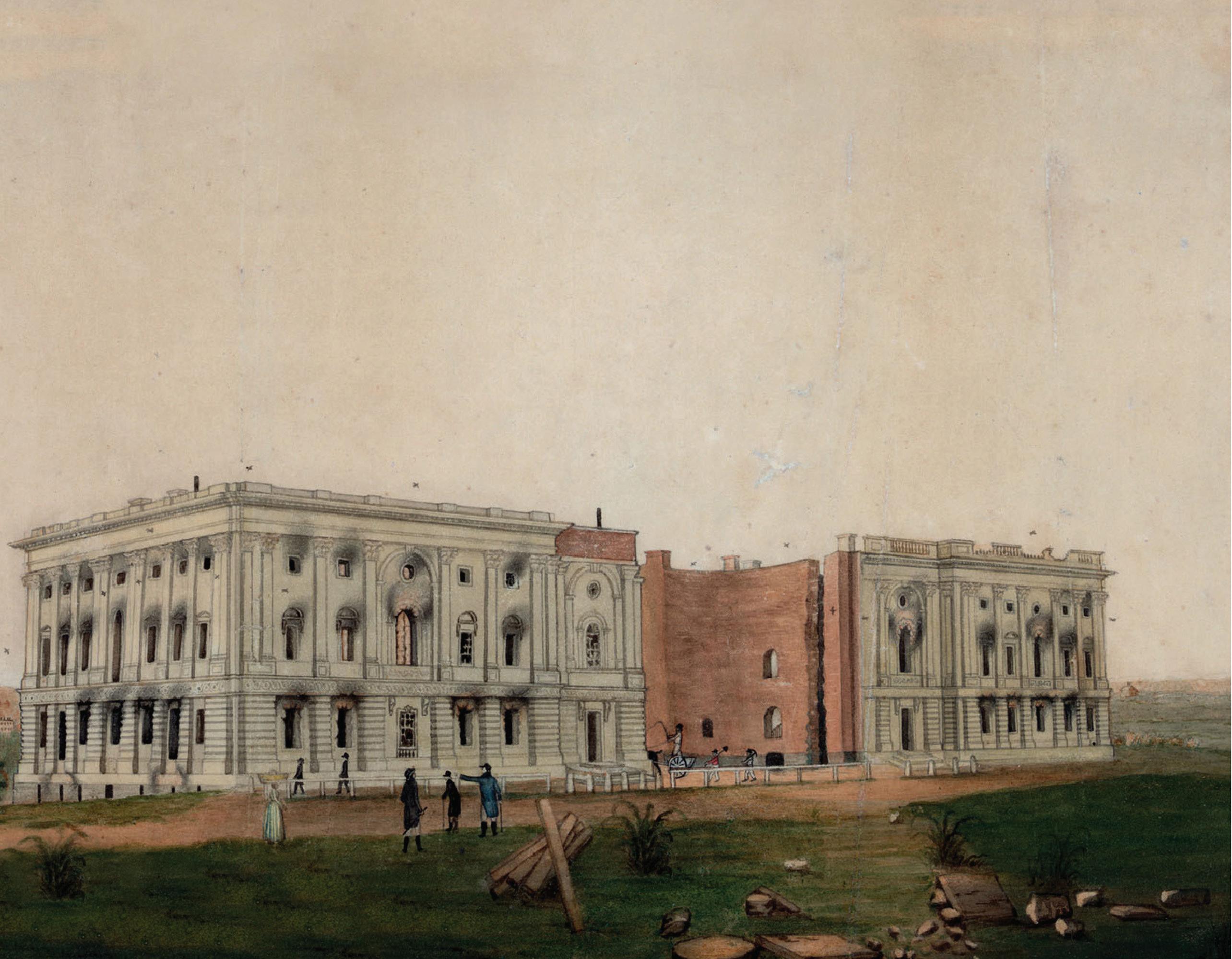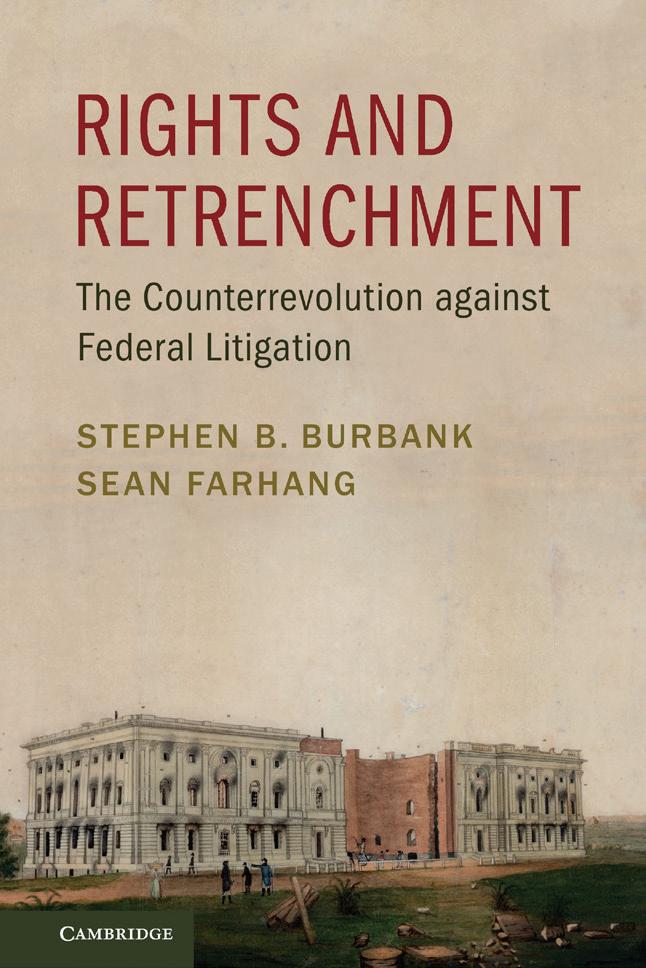
10 minute read
FISCH
WHY COMPANIES INVERT
on research by
MICHAEL KNOLL
Theodore K. Warner Professor of Law and Professor of Real Estate Co-Director of the Center for Tax Law and Policy

In 2014, Professor Edward D. Kleinbard, former Chief of Staff of U.S. Congress Joint Committee on Taxation and now of USC’s Gould School of Law, published an article in Tax Notes arguing that competitiveness has nothing to do with why U.S. corporations engage in corporate inversions — a cross-border acquisition where a firm acquires a foreign target, and that foreign target then becomes the parent of the group that includes the original U.S. corporation as a wholly owned subsidiary.
Penn Law professor Michael S. Knoll rebuts Kleinbard’s competitiveness claim in a special report titled “Taxation, Competitiveness, and Inversions: A Response to Kleinbard” in the May 1, 2017 issue of Tax Notes. In the piece, Knoll responds that the issue is more “nuanced, complex, and ambiguous” than Kleinbard attests, and that, in his 2014 paper, Kleinbard has not shown that U.S. companies are not at a taxinduced competitive disadvantage relative to their foreign rivals.
Knoll is the Theodore K. Warner Professor at Penn Law and Professor of Real Estate at Wharton, as well as the Co-Director of the University of Pennsylvania Center for Tax Law and Policy. Much of his recent research involves the application of finance principles to questions of international tax policy, especially the connection between taxation and competitiveness.
Critics view corporate inversions as a way for companies to reduce their U.S. taxes, Knoll explains, and, in 2016, the federal government proposed regulations designed to discourage inversions. Aside from the tax implications, another fear is that inverted companies will move their headquarters, employment, investment, and research and development out of the United States.
Managers of inverting companies, however, claim that U.S. corporations are taxed more heavily than their foreign counterparts, Knoll notes. They attest that a desire to invert is a signal that the U.S. international tax system is punitive toward U.S. corporations.
Kleinbard and his 2014 article are important, Knoll writes, because they “have played and continue to play a highly visible role in public policy debates over inversions. His article has been cited for the propositions that U.S.-domiciled companies are not taxdisadvantaged relative to their foreign competitors and that U.S. domiciled companies do not improve their competitive position by inverting.”
Kleinbard claims that U.S-domiciled MNCs are taxdisadvantaged from both a financial accounting and a cash flow perspective, Knoll notes. Kleinbard builds his financial accounting argument around a 2015 Tax Notes column by Martin A. Sullivan that reviews studies of multinational corporations’ (MNCs) effective tax rates (ETRs). These studies — using different methods, data, and time frames — conclude that “the global ETR of the average U.S.domiciled MNC is no higher or is not substantially higher than that of the average non-U.S.-domiciled MNC.”
But upon closer inspection, Knoll explains, these studies actually point toward U.S.-domiciled MNCs facing a tax disadvantage. They have higher global average ETRs than MNCs domiciled in most other advanced economies.
Knoll finds further support for his claim that U.S.-domiciled MNCs are at a tax-disadvantage relative to their foreign rivals from studies of inverting firms. In studies using pre-2004 data, global ETRs following inversions consistently declined. In more recent studies of the effects of inversions on global ETRs, the effect is not uniform, but they do point toward many U.S.-domiciled MNCs lowering their global ETR by inverting.
Knoll also looked at the statements by management of inverting companies, and while not all publicly stated expectations of a decline in global ETR, many, in fact, did. For example, Steris Corp., which inverted in 2015, said it expected its global ETR to fall from 32.1 percent to 25 percent. Pfizer expected its global ETR to fall from around 25 percent to around 17 or 18 percent before its inversion with Allergan was cancelled in 2016. And CF Industries Holdings Inc. expected a drop from 35 percent to 20 percent on its merger with OCI before it, too, was cancelled.
“[T]he managers of many inverting corporations expect to see their companies’ ETRs fall,” Knoll writes.
“Thus, viewed through the lens of corporations’ global ETRs,” Knoll argues, “Kleinbard’s claim that inverting U.S.-domiciled companies do not improve their competitive position by inverting is not supported by the data and is inconsistent with most studies.”
In terms of cash flow, Kleinbard claims that U.S.-domiciled MNCs do not incur costs because of the United States’ worldwide tax system with effectively unlimited deferral on earnings retained overseas. But, according to Knoll, there are good reasons to believe that U.S. firms incur costs from deferral and hence are at a competitive disadvantage.
Knoll cites the 2004–2005 tax holiday that receded the maximum repatriation tax rate from 35 percent to 5.25 percent. During that time, 843 U.S. MNCs repatriated $362 billion.
“If it were costless for companies to keep repatriated earnings overseas,” Knoll writes, “presumably they would have foregone repatriation during the holiday.”
In addition, there is a widespread believe that overseas cash holdings that would be subject to tax are valued at less than their face value by the market. Plus there is evidence that holding large amounts of offshore earnings incurs implicit nontax costs, such as tax planning and structuring costs.
The available data and studies do not support Kleinbard’s claim that U.S.-domiciled MNCs are not tax-disadvantaged relative to their foreign rivals — either from the perspective of financial accounting (global ETRs) or cash flow, Knoll writes. At best, the data is inconclusive, though most of it supports that view that U.S.domiciled MNCs can improve their competitive position by inverting.
“Although improving competitiveness might not be the only reason to invert (and we do not have a good sense of the magnitude of the advantage), improving competitiveness is and remains a powerful motivation for inverting,” Knoll concludes. “And policies intended to curb inversions that ignore this state of affairs are likely to create tensions and produce adverse effects.”
MICHAEL KNOLL
UNDERSTANDING THE PUSHBACK
AGAINST PRIVATE ENFORCEMENT
on research by
STEPHEN B. BURBANK
David Berger Professor for the Administration of Justice


STEPHEN BURBANK One of the primary mechanisms for the enforcement of civil rights laws is the ability of plaintiffs to recover their attorney’s fees if they prevail in private litigation. This method of enforcing rights is called private enforcement, and it has been a central instrument to implement social and economic policy since the 1960s. But the rise of private enforcement led to a counterrevolution aimed at curtailing it, and that counterrevolution is the focus of a new book, Rights and Retrenchment, by Penn Law professor Stephen B. Burbank and his co-author, Sean Farhang.
Burbank is David Berger Professor for the Administration of Justice and the author of definitive works on federal court rulemaking, interjurisdictional preclusion, litigation sanctions, international civil litigation, and judicial independence and accountability. Farhang is Professor of Law and Associate Professor of Political Science and Public Policy at the University of California, Berkeley. He is the author of the award-winning book, The Litigation State (Princeton, 2010).
Although liberals evinced faith in a centralized, federal bureaucracy for regulation during the New Deal, the authors explain, by the 1960s liberals became disillusioned as the agencies tasked with regulating business came to identify with the businesses they oversaw as constituencies in need of protection, and the bureaucracy came to be seen as a conservative force.
One of the less studied ways liberal groups combated this change, Burbank and Farhang write, was to advocate for rules that circumvented the administrative state by encouraging direct enforcement of legislative mandates through private lawsuits against targets of regulations, such as discriminating employers and polluting factories. Rules that authorized the recovery of attorney’s fees or multiple damages if a plaintiff won the case were especially important to encouraging private enforcement.
The Civil Rights Act of 1964 was a turning point for private enforcement, Burbank and Farhang note. The support of Republicans was crucial to the law’s passage, and they stripped the strong administrative powers that civil rights liberals had proposed from the bill, replacing them with private enforcement instead. Liberals insisted on a fee-shifting mechanism, and — although the measure was viewed initially as a compromise — the result shifted the landscape in favor of civil rights groups. The law led to resources for non-profit public interest groups, a rise in the number of such groups, and the growth of a private for-profit bar to litigate civil rights claims.
But the advance of private enforcement was contested by a countermovement, which is the subject of Burbank and Farhang’s book. “The counterrevolution’s strategy was to leave substantive rights in place while retrenching the infrastructure for their private enforcement,” the authors write.
The movement employed three different strategies: trying to amend existing federal statutes to reduce opportunities for private enforcement by eliminating or reducing the incentives that stimulated it; trying to amend Federal Rules of Civil Procedure that were salient to private enforcement; and litigating with the goal of gaining rulings in the federal courts that limited private enforcement. Of those three strategies, Burbank and Farhang explain, the most successful was the campaign in the courts.
Finally, the campaign in the courts sought to shrink opportunities and incentives for private enforcement by focusing on issues such as standing, damages, fee awards, and class actions, the authors write, and this was the most successful venue for retrenchment. Using both quantitative and qualitative data, Burbank and Farhang show how an increasingly conservative Supreme Court turned against the private enforcement of federal rights. They found that in cases with at least one dissent, the probability of success for plaintiffs in litigating private enforcement issues in front of the Supreme Court has declined for 40 years, and in 2014, plaintiffs lost about 90 percent of the time, largely due to the votes of conservative justices.
Strikingly, the authors find that ideology had a greater influence on justices’ votes in private enforcement cases interpreting Federal Rules of Civil Procedure (such as Rule 23 on class actions) than in the larger domain of private enforcement cases or in cases involving the interpretation of the underlying substantive rights. In support of one hypothesis they offer to explain this phenomenon, the authors demonstrate empirically that newspapers cover the Court’s rulings on substantive rights far more extensively than rulings on laws providing opportunities and incentives to enforce those rights, which are perceived to be technical.
“[T]he Court’s decisions on rights enforcement, because of their lower public visibility, are less constrained by public opinion
To assess the legislative impact, the authors constructed an original dataset of 500 bills introduced from 1973 to 2014 that attempted to retrench private enforcement. They show that these efforts largely failed. Indeed, early in the counterrevolution, they were abandoned by the Reagan administration, because of concerns that the bills were seen as “anti-rights” and would be politically costly.
To examine the rulemaking element of the retrenchment effort, Burbank and Farhang compiled original data sets from 1960 to 2014 identifying every person who served on the Advisory Committee on Civil Rules. These members are appointed by the Chief Justice of the United States. The authors identified the occupation, party affiliation of the appointing president for federal judges, and practice type for practitioners, and they also collected every amendment to the Federal Rules proposed by the committee in that 55-year period.
Although the Advisory Committee came to be dominated by judges appointed by Republicans and corporate lawyers over time, Burbank and Farhang explain, few of their proposals have been relevant to private enforcement. Moreover, although those that were increasingly tended to disfavor plaintiffs, changes to the rulemaking process during the 1980s made bold change very difficult. and therefore less tethered to democratic governance,” write Burbank and Farhang.
Although the effects of any particular legal change on private enforcement can be difficult to pin down, the authors have no doubt about the overall effect of the retrenchment movement.
“[W]e feel no uncertainly that hundreds of decisions over more than 40 years restricting private rights of action, standing, attorney’s fees, damages, the ability to litigate rather than arbitrate, and access under Federal Rules — cumulatively — have diminished private enforcement of federal rights.”
Finally, observing that a majority of the cases in their data involved the interpretation of private enforcement regimes in federal statutes, the authors suggest that “judicial subversion of legislation raises troubling questions from the standpoint of democratic values.”






